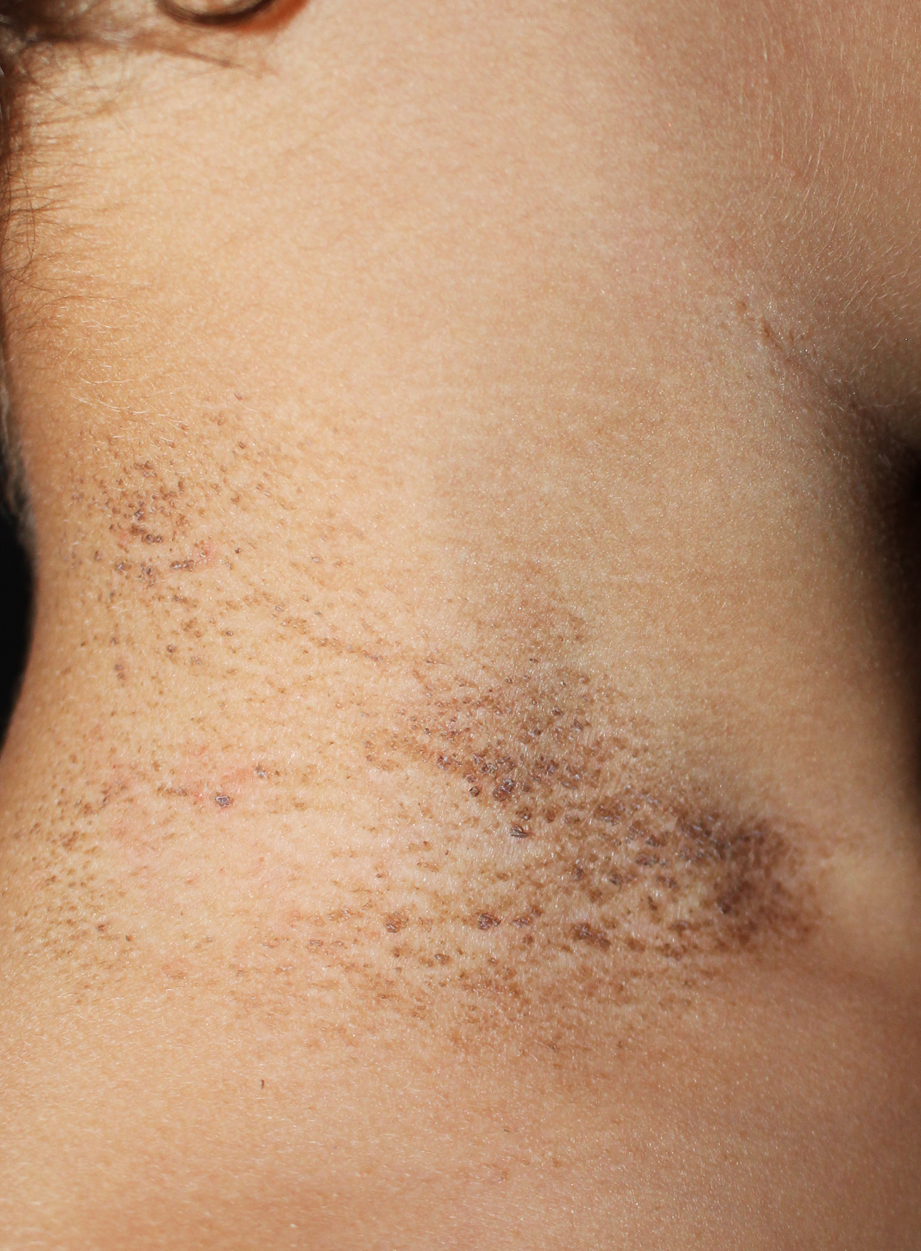Granular parakeratosis reminiscent of acanthosis nigricans.

Downloads
DOI:
https://doi.org/10.26326/2281-9649.30.3.2154How to Cite
Abstract
Granular parakeratosis (GP) is a histological term and describes a thickened horny layer that still contains pycnotic nuclei (parakeratosis) and basophilic keratohyalin granules similar to those of the granular layer. The most accredited pathogenetic hypothesis for this histological alteration is a defective differentiation of profillaggrin, the major constituent of keratoyalin granules, into filaggrin which in normal conditions degrades keratoyalin in the horny layer (4). This hypothesis explains the persistence of keratoyalin granules in the horny layer; its thickening could be favored by the almost constant localization to the folds, where the particular environmental conditions favor epidermal hyperplasia, as indicated by the behavior of seborrheic warts, epidermal nevi and pemphigus vegetans in these sites (2).
The differentiation defect of profilaggrin, perhaps genetically determined, as demonstrated by the existence of congenital cases of GP (3) could be revealed by multiple triggers: many of them have been hypothesized, but none are present in all cases, not even the localization to the folds.
The clinical picture of GP is highly variable by age – any age can be affected – , by sex – in adults the female sex prevails but not among children –, by location – it clearly prevails over the folds, in the child who wears a diaper almost always of the inguinal region (5, 6) but cases of the face and abdomen have been described –, and by duration – there are self-healing in weeks forms, especially in the child, but also persistent forms for 20 years (7) –.
The actual case, with its recurrence at the hottest moment in two consecutive summers, emphasizes the importance as a trigger of heat and sweating; these factors are important in GP as shown not only by the involvement of the folds, but also by some histological findings showing a prevalence of GP around the openings of the eccrine sweat glands (8).
The actual case also highlights the difficulties, at least at the beginning, in the differential diagnosis. These difficulties can be reduced, without resorting to skin biopsy, by scraping of the most superficial layers of the horny layer and by staining the smear with Giemsa (1) that demonstrates the characteristic pathological findings of GP.
